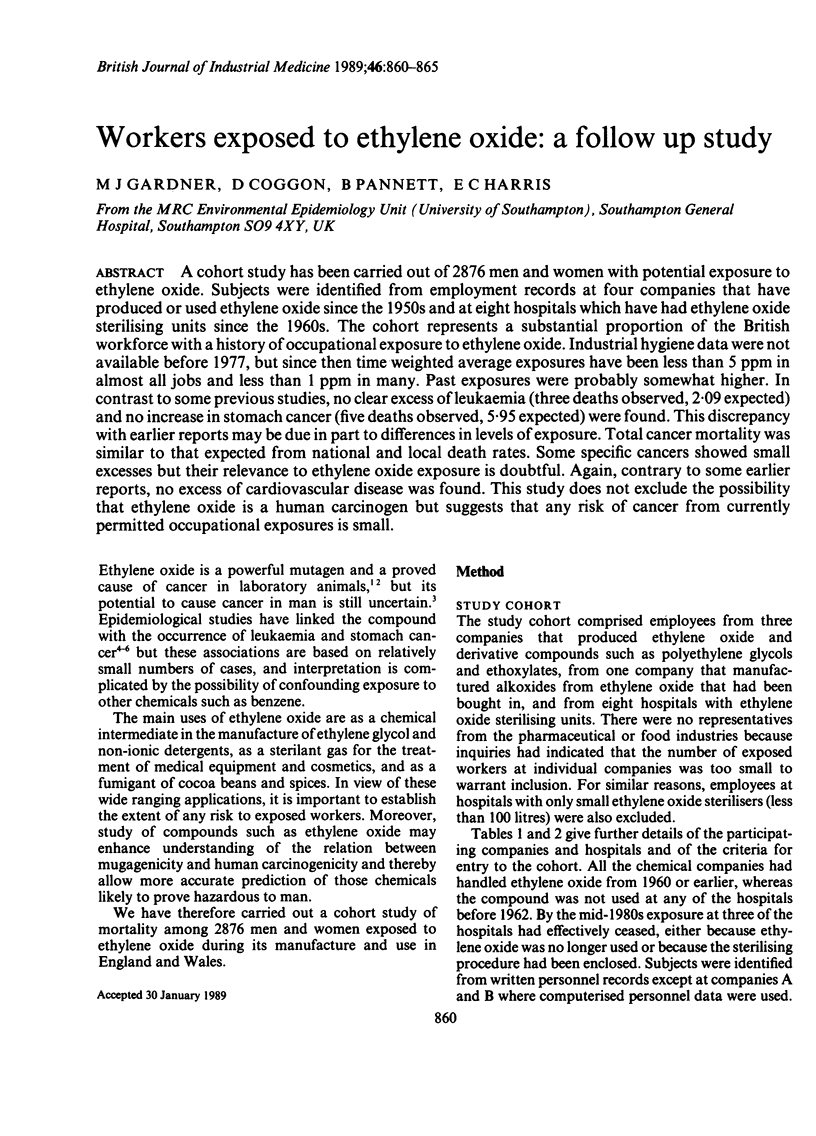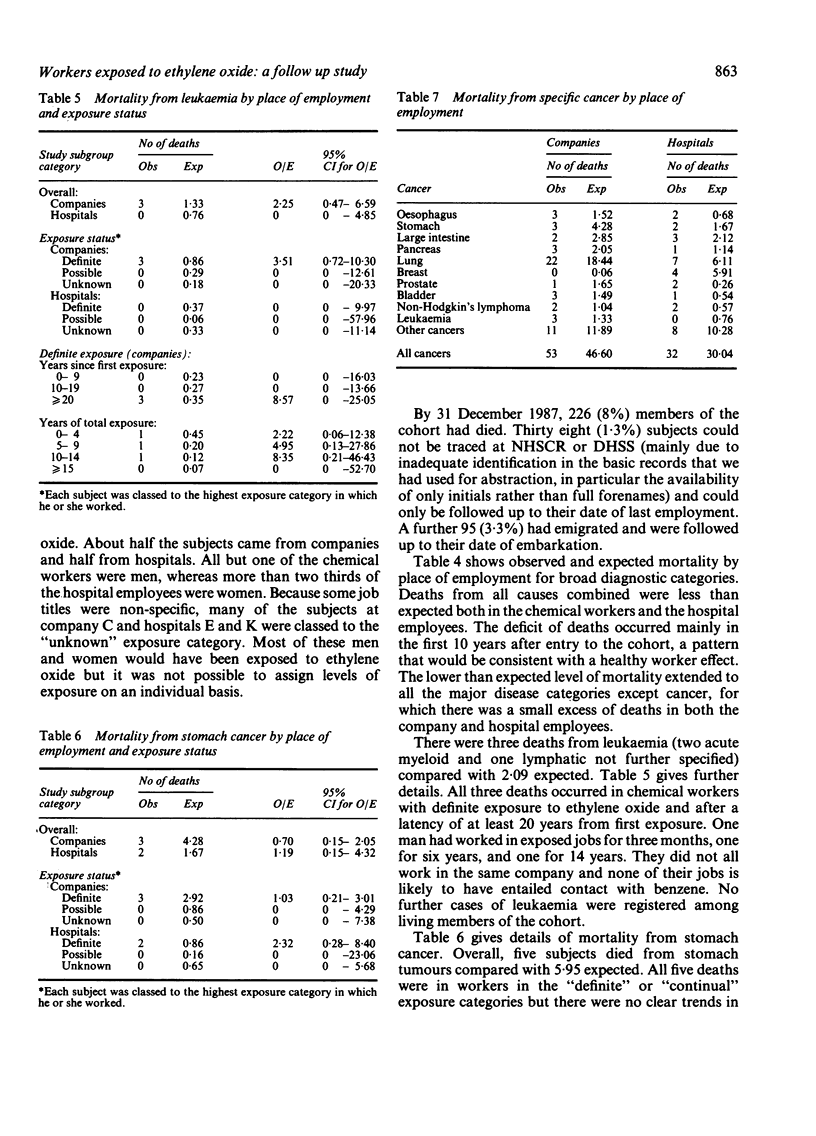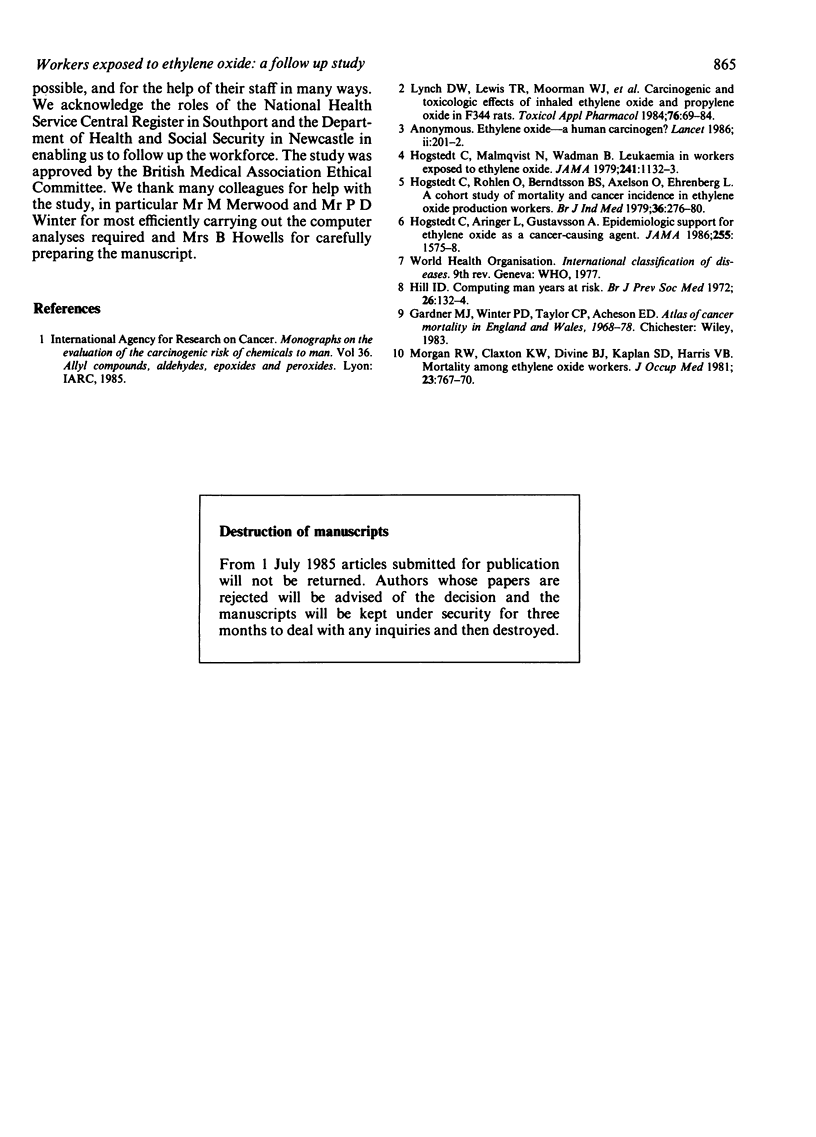Abstract
A cohort study has been carried out of 2876 men and women with potential exposure to ethylene oxide. Subjects were identified from employment records at four companies that have produced or used ethylene oxide since the 1950s and at eight hospitals which have had ethylene oxide sterilising units since the 1960s. The cohort represents a substantial proportion of the British workforce with a history of occupational exposure to ethylene oxide. Industrial hygiene data were not available before 1977, but since then time weighted average exposures have been less than 5 ppm in almost all jobs and less than 1 ppm in many. Past exposures were probably somewhat higher. In contrast to some previous studies, no clear excess of leukaemia (three deaths observed, 2.09 expected) and no increase in stomach cancer (five deaths observed, 5.95 expected) were found. This discrepancy with earlier reports may be due in part to differences in levels of exposure. Total cancer mortality was similar to that expected from national and local death rates. Some specific cancers showed small excesses but their relevance to ethylene oxide exposure is doubtful. Again, contrary to some earlier reports, no excess of cardiovascular disease was found. This study does not exclude the possibility that ethylene oxide is a human carcinogen but suggests that any risk of cancer from currently permitted occupational exposures is small.
Full text
PDF





Selected References
These references are in PubMed. This may not be the complete list of references from this article.
- Hill I. D. Computing man years at risk. Br J Prev Soc Med. 1972 May;26(2):132–134. doi: 10.1136/jech.26.2.132. [DOI] [PMC free article] [PubMed] [Google Scholar]
- Hogstedt C., Aringer L., Gustavsson A. Epidemiologic support for ethylene oxide as a cancer-causing agent. JAMA. 1986 Mar 28;255(12):1575–1578. [PubMed] [Google Scholar]
- Hogstedt C., Malmqvist N., Wadman B. Leukemia in workers exposed to ethylene oxide. JAMA. 1979 Mar 16;241(11):1132–1133. [PubMed] [Google Scholar]
- Hogstedt C., Rohlén O., Berndtsson B. S., Axelson O., Ehrenberg L. A cohort study of mortality and cancer incidence in ethylene oxide production workers. Br J Ind Med. 1979 Nov;36(4):276–280. doi: 10.1136/oem.36.4.276. [DOI] [PMC free article] [PubMed] [Google Scholar]
- Lynch D. W., Lewis T. R., Moorman W. J., Burg J. R., Groth D. H., Khan A., Ackerman L. J., Cockrell B. Y. Carcinogenic and toxicologic effects of inhaled ethylene oxide and propylene oxide in F344 rats. Toxicol Appl Pharmacol. 1984 Oct;76(1):69–84. doi: 10.1016/0041-008x(84)90030-9. [DOI] [PubMed] [Google Scholar]
- Morgan R. W., Claxton K. W., Divine B. J., Kaplan S. D., Harris V. B. Mortality among ethylene oxide workers. J Occup Med. 1981 Nov;23(11):767–770. doi: 10.1097/00043764-198111000-00011. [DOI] [PubMed] [Google Scholar]


